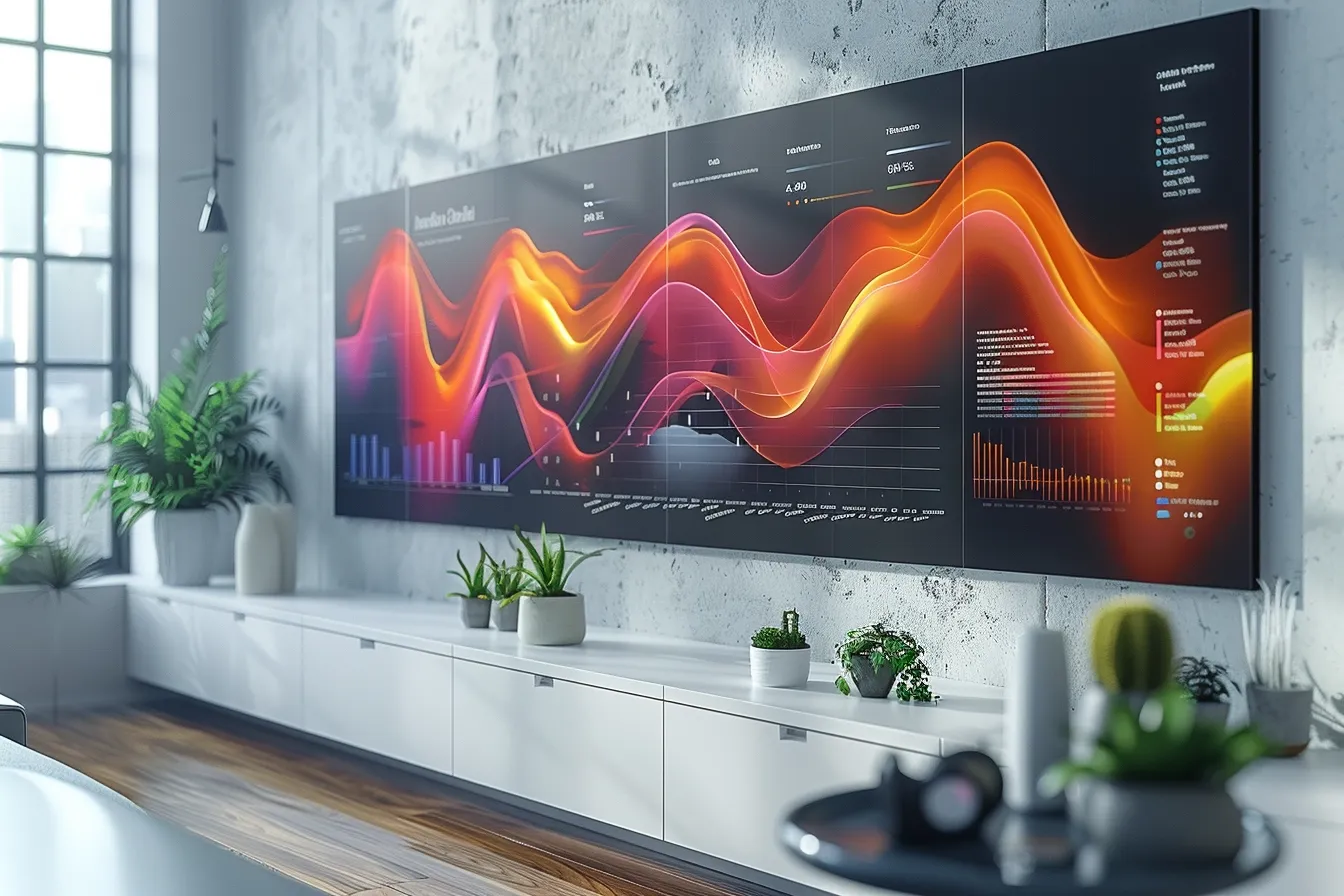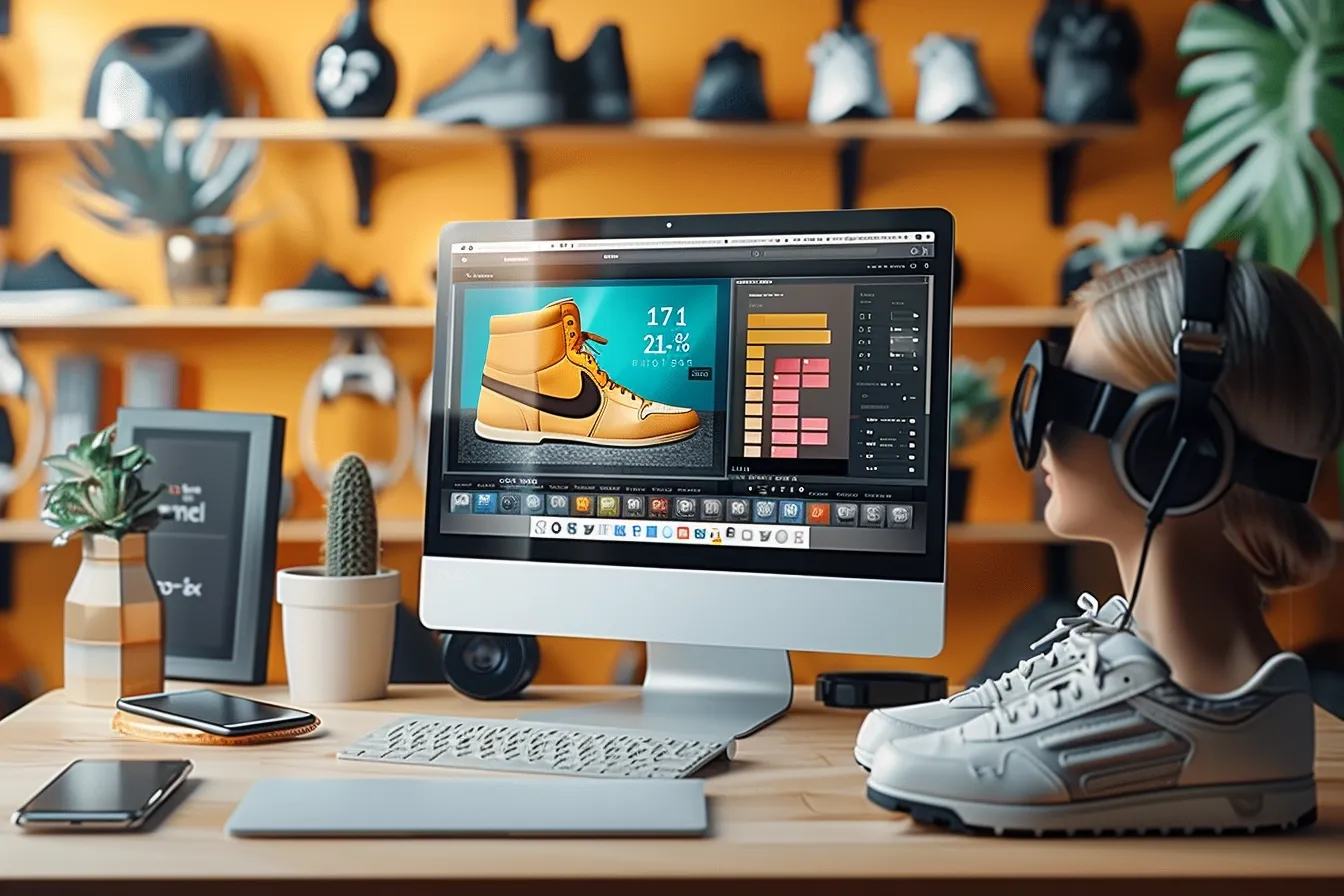Overview of Big Data and Its Importance in Design
A significant transition is currently taking place in the modern design industry, changing the way businesses and design firms develop and execute their plans. The core of this change is the concept of big data, which goes beyond being just a trendy term to symbolize a crucial influence in developing data-driven design methods. Let’s delve into the core of big data, examining its historical incorporation into the design profession and highlighting its crucial significance for contemporary design methodologies.

Big data is defined by four key pillars: volume, velocity, diversity, and veracity. These characteristics jointly characterize the extensive data created rapidly from many sorts and sources, requiring strict correctness and dependability. Big data in design includes user engagement metrics, social media comments, real-time market trends, and behavioral patterns. Being able to utilize and analyze this data offers design experts a unique chance to enhance their work according to real consumer requirements and preferences.
Historical Background
Design processes have transitioned from intuition-based approaches to empirical, data-driven solutions over time. Historically, designers mainly depended on their creative instincts and expertise to lead their projects, frequently resulting in success. With the rise of the digital age and the influx of user-generated data, it became clear that incorporating empirical insights might greatly improve design results. This transformation has not occurred suddenly but has been a gradual recognition of the importance of data analytics in the creative process.
Learn how to leverage user-generated content in branding:
Significance of Big Data in Design
Integrating big data into design approaches signifies a new age focused on the user. Designers may get profound insights into user habits, preferences, and pain spots by examining extensive information. This understanding allows for the development of designs that are both visually appealing and highly functional, customized to address particular user requirements. E-commerce platforms may use user data to create customized shopping experiences, which can boost engagement and conversion rates.
Explore how creative components affect branding tactics:

Furthermore, big data enables a degree of personalization and customization that was before impossible to achieve. Designers can predict consumer wants and preferences, often before people are conscious of them. This predictive capacity enables the development of products and services that strongly appeal to certain target groups, promoting a feeling of connection and dedication.
The importance of big data in design goes beyond just improving current projects. It catalyzes innovation by expanding the limits of what may be achieved in design. Designers may anticipate future developments and create innovative styles and features that establish new benchmarks in the industry by recognizing developing trends and patterns in extensive datasets.
In this data-driven design era, big data is not just a supporting tool but a crucial element in creating designs that are relevant, effective, and meet user expectations. Being able to adapt and succeed in this climate will set apart the top companies and design agencies of the future.

Data-Driven Design Strategies
In the realm of design, the shift from intuition-based decisions to data-driven strategies marks a pivotal evolution. Big data, with its profound capacity to analyze vast amounts of information, has emerged as a cornerstone for crafting design strategies that resonate deeply with target audiences.
Understanding User Behavior and Preferences
The essence of data-driven design lies in its ability to decode the intricacies of user behavior and preferences. Through the meticulous collection and analysis of data, designers gain unparalleled insights into what users seek, prefer, and dislike. Tools such as heat maps, user journey analytics, and A/B testing platforms serve as conduits to this understanding, offering a granular view of user interactions. By analyzing data from these tools, designers can identify patterns and anomalies in user behavior, enabling the creation of more engaging and effective designs.
This strategy goes beyond mere aesthetics; it’s about crafting experiences that resonate on a personal level with users. For instance, an e-commerce platform might use data analytics to understand how users navigate its website, which products they linger on, and where they face difficulties. Such insights allow designers to streamline the user journey, making it more intuitive and reducing friction points that could deter potential purchases.

Customization and Personalization
The power of big data extends into the realms of customization and personalization, transforming standard design solutions into bespoke experiences that cater to individual user needs. In today’s digital landscape, where users are bombarded with content, personalized design stands out by speaking directly to the user’s preferences, history, and behavior.
Big data enables designers to segment their audience into distinct personas based on detailed criteria, including demographic information, browsing behavior, and purchase history. This segmentation allows for the creation of tailored designs that appeal to each persona on a more personal level. For example, a streaming service might use viewing history data to personalize its interface for each user, recommending shows and movies that align with their preferences, thereby enhancing engagement and loyalty.
Explore essential tactics that businesses may use to increase consumer loyalty:
Predictive Analysis and Future Trends
At the forefront of data-driven design strategies is the use of predictive analysis to anticipate future trends and user needs. Leveraging AI and machine learning algorithms, designers can sift through massive datasets to identify emerging patterns and predict future behaviors. This forward-looking approach not only informs the creation of relevant designs today but also ensures longevity by anticipating shifts in user preferences and market dynamics.

Predictive analysis can help designers in various ways, from forecasting color trends in the fashion industry to predicting the next big functionality in mobile apps. By staying ahead of these trends, brands can position themselves as leaders in innovation, continually offering products and services that meet or exceed user expectations.
The integration of big data into design strategies represents a significant leap towards more informed, user-centered design decisions. By understanding user behavior, leveraging customization and personalization, and employing predictive analysis, designers can create experiences that are not just visually appealing but deeply resonant with users. This data-driven approach not only enhances the user experience but also drives business success by ensuring that products and services meet the evolving needs of the market.
As we move forward, the challenge for designers will be to harness the full potential of big data while maintaining the creative essence that lies at the heart of great design. The balance between data and creativity will define the future of design, paving the way for innovative solutions that are both aesthetically pleasing and profoundly user-centric.
Challenges and Ethical Considerations
Integrating big data into design techniques is revolutionary but comes with several hurdles and ethical implications. Designers must carefully negotiate the balance between the inventive possibilities of data-driven design and the ethical obligation of managing data and preserving user privacy.

Privacy and Security of Data
Data privacy and security are key ethical problems in the digital era. Handling user data without strict security measures and ethical rules might lead to substantial hazards. Regulations like the General Data Protection Regulation (GDPR) in the European Union and the California Consumer Privacy Act (CCPA) in the United States have established standards for safeguarding personal data. Designers and organizations need to adhere to these requirements by implementing measures that protect user information from breaches and illegal access. This involves anonymizing data where feasible, obtaining consent for data gathering, and being clear about the usage of data.
Accurate Data Interpretation
One other obstacle in data-driven design is accurately interpreting data. The extensive scale and intricate nature of big data may result in misinterpretations, causing designers to draw inaccurate conclusions that might drive design initiatives astray. Confirmation bias is a prevalent trap in which data is evaluated to support current views or theories. To reduce these risks, it is crucial to analyze data critically, use statistical tools to confirm results, and consider many viewpoints for a thorough comprehension of the data.
The environment in which data is acquired and evaluated is critical for its interpretation. Designers need to take into account cultural, societal, and economic elements that impact user behavior to ensure that data-driven tactics are flexible and pertinent to various user demographics.

Harmonizing Creativity and Data
One of the most intricate challenges in using data-driven design solutions is preserving the fine equilibrium between data and creativity. Data offers significant insights for design decisions, but relying too much on data can hinder creativity, resulting in designs that lack novelty and personalization. Design’s core rests in its capacity to creatively address issues, eliciting emotion and fostering connection. Designers should utilize data as a tool to educate and inspire the creative process, rather than control it.
Adopting a mentality that appreciates both data and creativity necessitates a collaborative strategy, with data analysts and designers working together to analyze data findings and transform them into creative design solutions. This partnership creates a setting where data boosts creativity, leading designers to ideas that are both effective and innovative.
The problems and ethical implications of using big data in design techniques emphasize the necessity for a conscientious and equitable approach. Designers must adapt to the changing landscape of their industry by upholding ethical standards, ensuring precise data analysis, and safeguarding their creative authenticity in the era of big data. The design community may utilize big data to develop user-centric designs that prioritize privacy, diversity, and creativity by directly confronting these issues.
Case Studies and Future Outlook
Real-world examples best demonstrate the significant influence of big data on design techniques. This section delves into case studies and anticipates the future of data-driven design.

Case Studies
- Spotify is a trailblazer in customization, utilizing big data to customize music suggestions based on individual preferences. The “Discover Weekly” function uses machine learning algorithms to assess users’ listening patterns, tastes, and songs’ acoustic properties to create a personalized playlist of recommended songs every week. This customized method has not only improved customer satisfaction but also notably boosted user interaction and commitment.
Unveil the ways to create an enduring relationship with consumers:
- Airbnb uses big data to enhance the experiences of both guests and hosts. Airbnb enhances its search algorithms by evaluating extensive data on user preferences, booking trends, and comments to ensure visitors are matched with the most suitable lodgings. Data insights are used to create the platform, making it user-friendly and simplifying the process of listing, finding, and booking rooms.
- Zara utilizes big data to anticipate trends and optimize its supply chain in the dynamic fashion industry. Zara can promptly change manufacturing by analyzing real-time sales data and client input from its worldwide stores to pinpoint popular goods. Zara’s agility enables them to quickly move ideas from concept to retail, ensuring their products are always in line with the latest fashion trends.
Incorporating Big Data into Design Processes
Incorporating big data into design processes necessitates a culture transformation inside firms, beyond merely implementing new tools and technology. To achieve effective integration, firms need to promote cooperation among designers, data scientists, and marketers to form interdisciplinary teams that can utilize data insights to influence design choices. Consistent training and seminars may assist team members in staying updated on the most recent data analysis methodologies and design trends, fostering a culture of ongoing learning and creativity.

Upcoming Developments in Data-Driven Design
Anticipating the future, several pivotal trends stand ready to influence the trajectory of data-driven design:
- Increased Use of AI and Machine Learning: As these technologies advance, they will be used to analyze user data and produce predicted insights in a more sophisticated way, opening the door to ever more individualized and adaptable design solutions.
- Ethical Data Use and Privacy: Brands must emphasize ethical data practices, emphasizing openness, permission, and security in light of the rising concerns over data privacy. This moral approach will turn into a crucial distinction in gaining users’ confidence.
- Virtual Reality (VR) and Augmented Reality (AR): These two technologies open up new possibilities for data-driven design, allowing companies to produce immersive, highly tailored, and interesting experiences.
- Sustainability: Data-driven design will be utilized more and more to assist companies in decreasing waste and maximizing resources by using more intelligent design and production techniques.
Big data plays a crucial role in developing data-driven design methods. Examining example studies such as Spotify, Airbnb, and Zara illustrates the significant influence of using data to guide design choices. In the future, incorporating big data into design processes is expected to improve user experience and promote innovation, sustainability, and ethical practices. The data-driven design journey is in its early stages, with the potential to revolutionize sectors and reinvent user involvement being boundless.



